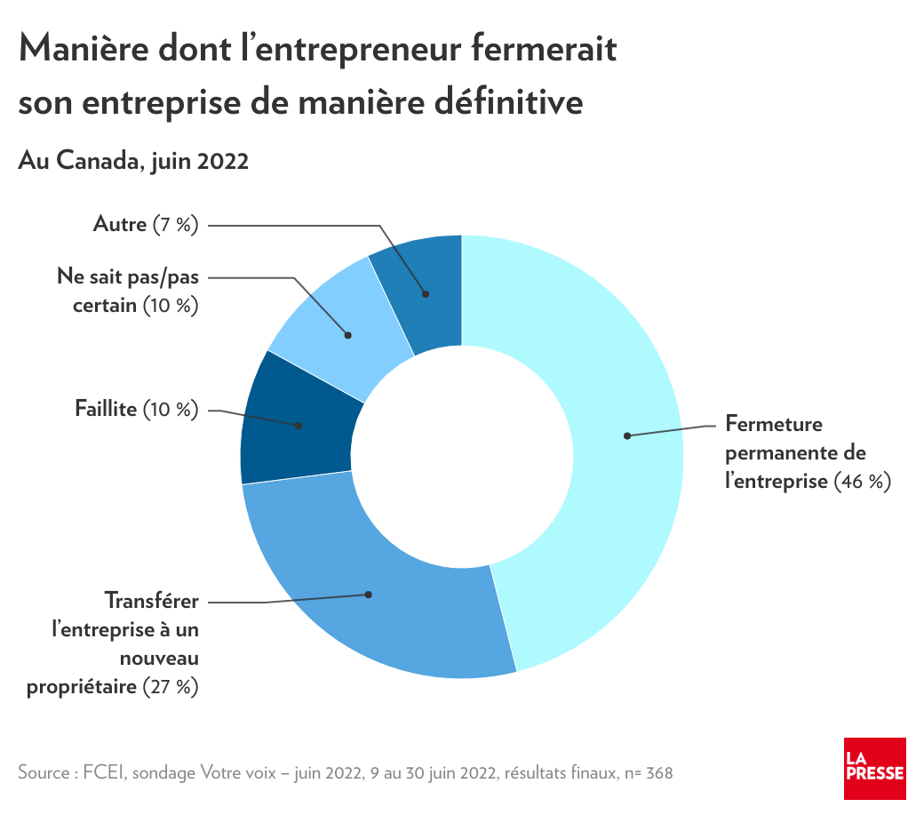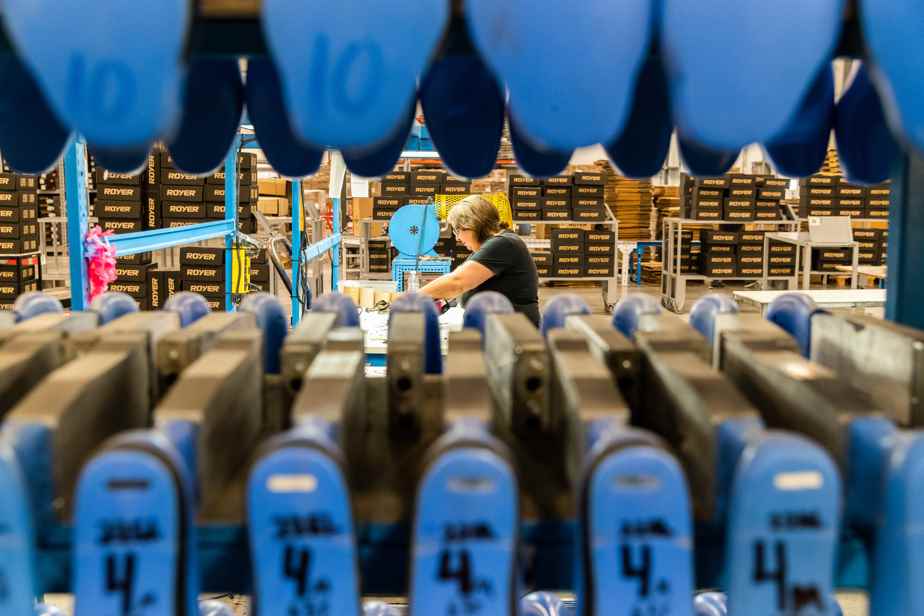(Toronto) Business bankruptcies are on the rise in Canada and more and more small businesses are at risk of closing, according to a group of small and medium-sized enterprises (SMEs).
Posted at 11:26
Updated at 10:05 p.m.
After dropping dramatically at the start of the pandemic, the number of business insolvency cases has been on the rise since the start of 2022, data from Canada’s Office of the Superintendent of Bankruptcy shows. In April 2020, for example, 164 bankruptcies or business proposals were reported in Canada, including 80 in Quebec. Last June, 303 were recorded in Canada and 175 in Quebec. It was mainly the construction, accommodation and catering sectors that were affected.
The Canadian Federation of Independent Business (CFIB), which has 95,000 members across the country, also has its own statistics that paint an even grimmer picture. In fact, the number of bankruptcies is “marginal” to get a picture of the financial difficulties of SMEs, said Jasmin Guénette, vice-president of national affairs at the CFIB.

PHOTO PROVIDED BY CFIB
Jasmin Guénette, Vice President of National Affairs at the Canadian Federation of Independent Business
“Bankruptcy is the last resort, the most complex and the one with the most consequences,” he explains. The majority will want to sell the business, shut it down permanently, make a deal with creditors on a voluntary basis. »
In fact, according to a CFIB survey conducted last June, bankruptcy is the preferred option for only one in ten entrepreneurs.

In addition, 17% of entrepreneurs, or one in six, say they are considering bankruptcy or closing their business. Across Quebec, therefore, some 45,000 businesses with fewer than 500 employees could close their doors.
“We went through two years and a few months of pandemic, economic restrictions, confinements, recalls the vice-president of the CFIB. When you add to that the shortage of labour, the inflation which also affects entrepreneurs, the problems of supply chains, many find that it becomes unmanageable. »
Earned revenue
Rising gross domestic product statistics until recently obscure another reality: 54% of SMEs have not returned to pre-pandemic sales levels, according to the latest CFIB survey. Two out of three entrepreneurs, 62% more precisely, are still carrying debt associated with the pandemic, through loans from financial institutions or governments. Barely 10% claim to have reimbursed them.
Canadian SMEs have thus accumulated an average debt of $158,000, $108,034 for those in Quebec.
Hence CFIB’s two requests in this regard, first with regard to loans of up to $60,000 granted to some 900,000 businesses under the Canada Business Emergency Account (CEBA). The repayment deadline scheduled for December 2022 has been extended to December 2023. The CFIB is requesting a further extension, to December 2024.
Moreover, a business that repays its loan before the due date is granted a partial write-off of one-third of the loan, up to $20,000. CFIB is instead asking that this write-off be set at 50%, or $30,000.
Taxation to the rescue
For Mr. Guénette, “governments have a duty to put in place measures to help businesses get out of this situation”. Other avenues are being proposed by the CFIB, including increasing the portion of income taxed at the lower small business rate, which is currently $500,000, to $600,000 and reducing that rate from 9 to 8 %. Long-standing demands such as reducing provincial payroll taxes and freezing or lowering employment insurance and pension premiums are coming up again. Finally, we are asking for a reduction in credit card user fees for small merchants.
“During the pandemic, government assistance programs allowed many SMEs to stay open, but these programs have now ended,” said the vice-president of the CFIB. The return to normal promises to be long and complicated. »

